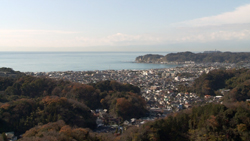 |
 |
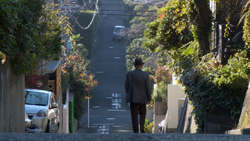 |
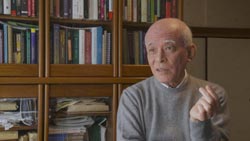 |
A SHAPE OF TIME - the composer Jo KondoHomage to Yasujiro Ozu Even if Jo Kondo's music doesn't seem to have a direct connection to the films of Yasujiro Ozu, a closer look reveals some common elements and astonishing similarities between the two artists. We decided to make this visible in different ways during the course of our film. Therefore the film also is a subtle homage to Yasujiro Ozu. Like Ozu, Kondo has spent most of his life in Kamakura. He could very well have been one of the baseball playing kids that appear in Ozu's late films. In some ways, the life of Kondo even resembles that of Professor Somiya in Ozu's film BANSHUN (Late Spring, 1949), who commutes between Kamakura and Tokyo just as Kondo has done this for a long time in his life. So in filming Kondo on his way to work the scenes from BANSHUN automatically came to our mind. We made some direct references to BANSHUN by choosing similar motifs and more generally by applying Ozu's low angle camera style (see more). On a structural level certain formal elements in Ozu's films seemed to be particularly suitable for referring to Kondo's concept of time: Non-directionality Around the 1930s Ozu increasingly had problems with "plot". He started to realize that the story may hinder the actors to unfold, to allow them to take different directions, not fully determined by a "plot". "Ozu had discovered that 'story' did not necessarily mean dramatization, at least not in any gross form. (...) The 'story' is simply the recounting of (...) what happened. It became increasingly possible to compress this 'story' into a one-line description" (Donald Ritchie). Similarly, Kondo's music is a line of successive sounds (moments) or micro structures to allow "each sound to have its own entity and life" and thus he points out in one of our interviews: "I try not to give the overall structure any directionality." As a cinematic equivalent to this "moment-for-moment" concept we decided to use almost exclusively static shots in our film - as Ozu did in most of his late films. Variations Like Kondo, Ozu tries to break directionality by using variations. The film theorist David Bordwell describes how Ozu permutes the individual pictures of the bar visits by Mr. Hirayama in his last film SANMA NO AJI (An Autumn Afternoon, 1962) in order to undermine the expectations of the viewer. We allude to these cinematic bar visits by filming Kondo in his favourite sushi bar, which is located - like the one in Ozu's film - in a small side street in Tokyo's Ginza district. Astonishingly the atmosphere during the scene with its casual chatting about daily life and the enjoying of food and drink turned out to be quite similar to that in many Ozu films. 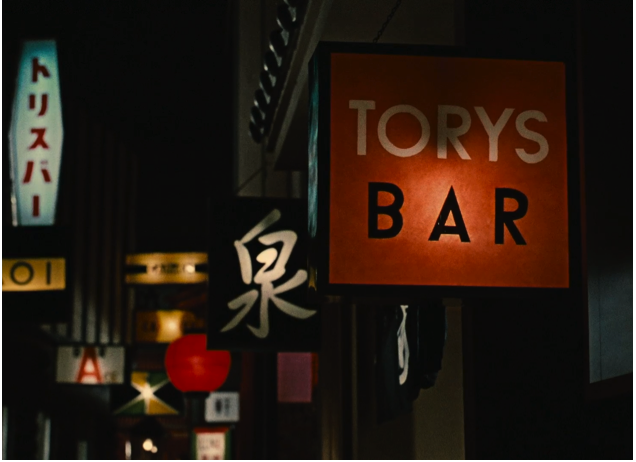 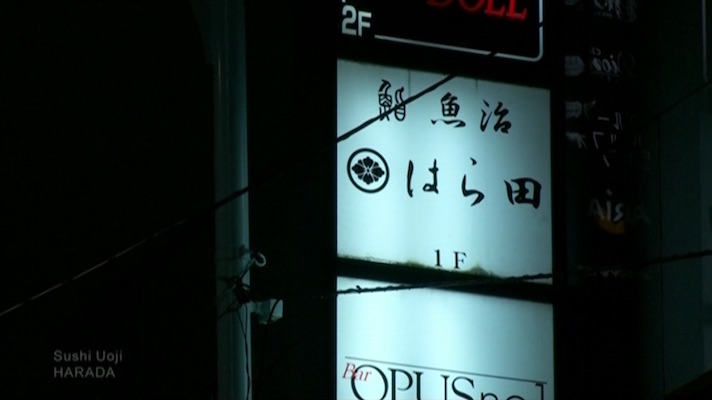 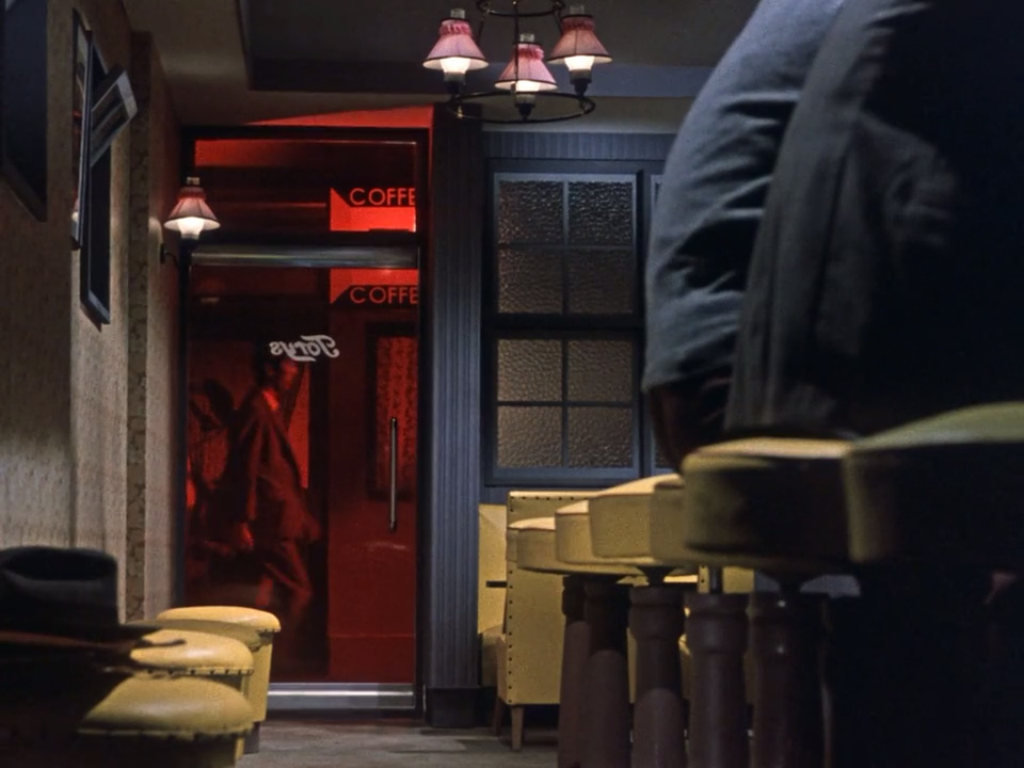 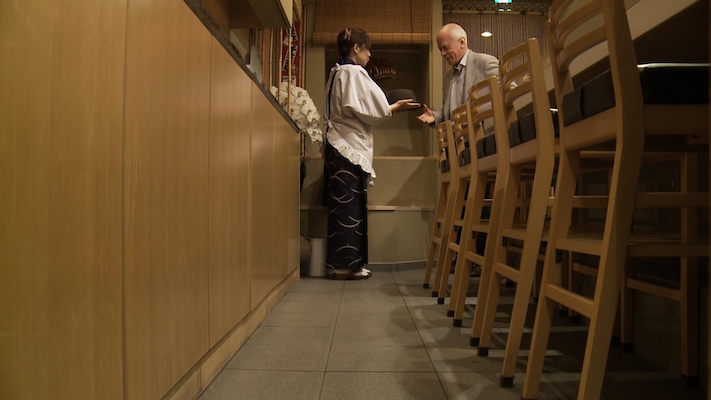 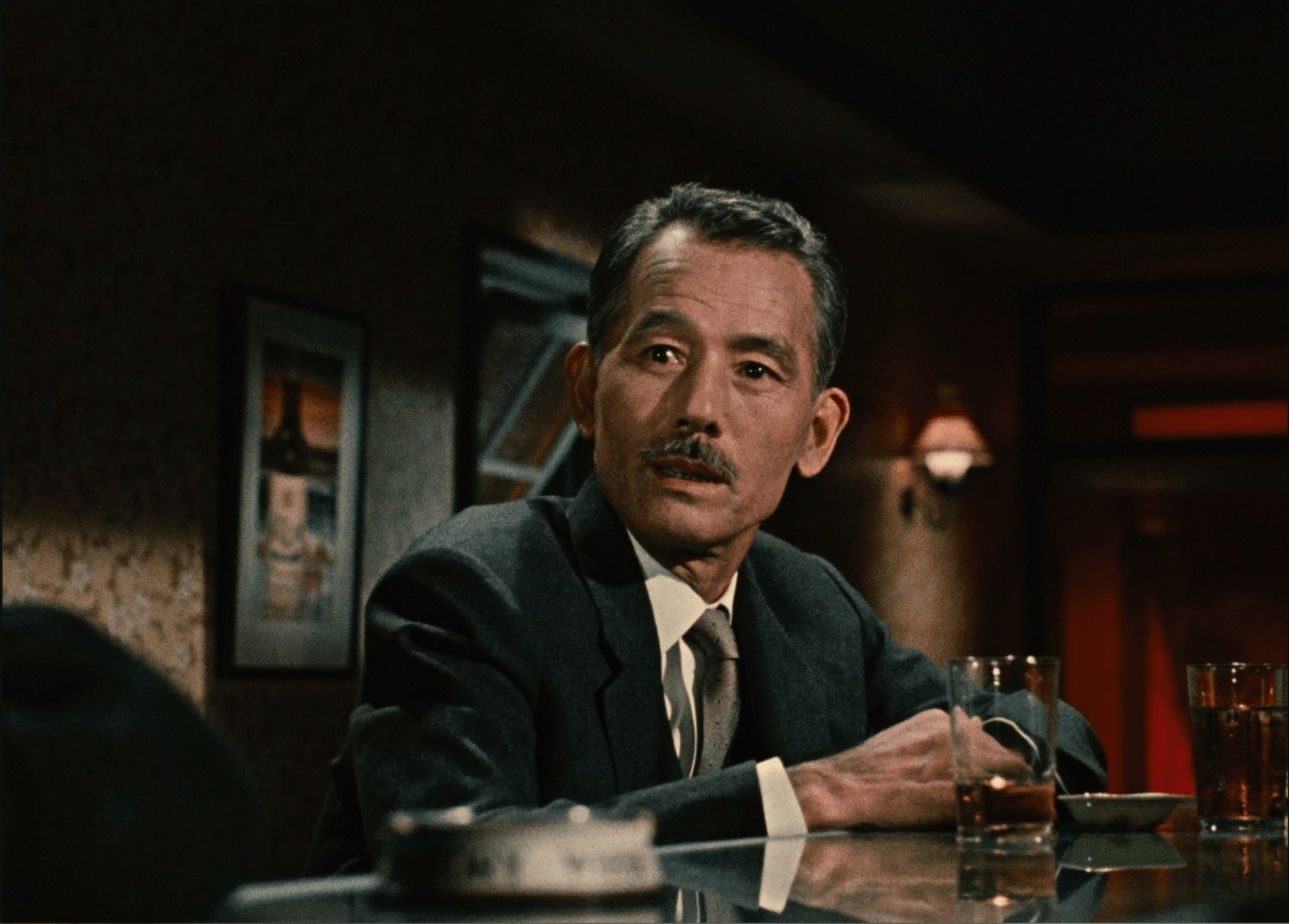 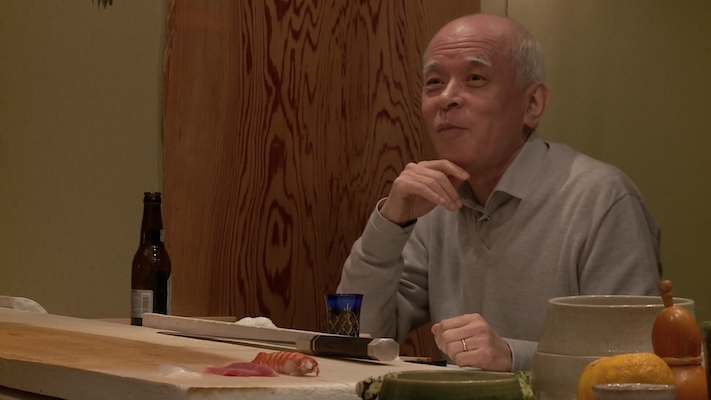 Color and codas Nature is traditionally highly valued in Japan. At the time of cherry blossom and autumn leaves, the Japanese are drawn to the gardens of Kyoto, Nara and Kamakura. With green tea and a candy, visitors to the temples look at centuries old trees, stones and mosses. On the occasion of a concert at the "Witten Days for New Chamber Music" in Germany, April 2009, we made a trip to the nearby Ahr Valley together with Jo Kondo. After looking closely at a mountain slope on which the spring blossoms had an exquisite, subtle coloring, Kondo noticed that he wanted to achieve exactly this quality in his music. We spontaneously decided that this subtle coloration should be an aesthetic guide for us when choosing locations. We wanted it finally permeate our whole film. There is a special quality to the establishing shots and close-ups in Ozu's films. They often somehow "empty" the viewer's mind by interrupting the narrative line. For these shots director and film historian Paul Schrader coined the term "coda". The "codas" in our film are mostly pictures from the immediate vicinity of Kondo's house in Kamakura. This felt like the right idea when Kondo appreciated the Kamakura hills surrounding him by being "at the same time similar and different" - a quality he presumed might have nourished his preference of "ambiguity" in art. Donald Ritchie "Ozu", University of California Press, 1974, p.237 David Bordwell "Ozu and the Poetics of Cinema", Princeton University Press, 1994, p.127ff Paul Schrader "Transcendental Style in Film: Ozu, Bresson, Dreyer", Da Capo Press, 1972, p.29 |
THE FILM |
|||
 |
 |
|||

